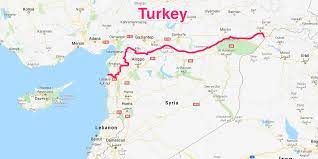
Syria could open more border crossings for quake aid, WHO says

More border crossings are to be opened for easy flow of aid
The Feb 06, 2023 earthquake that has Epicentre in Turkey has created havoc in both
Turkey and its neighbouring Syria. Reportedly, more than 5,700 people are now known to
have been killed in Syria whereas, in Turkey, the death toll has already exceeded 31,000.
More than one million people have been left homeless in Turkey, and in Syria, this number
could be much higher, aid organisations warn.
Many Syrians have been angry over the lack of aid to their war-torn nation. The government
of President Bashar al-Assad has blamed difficulties in rescue efforts on the impact of
Western sanctions were imposed on the country.
But international aid groups say that key impediments are the Assad government’s
mismanagement and refusal to engage with all areas of the country.
A UN Security Council agreement only authorises the use of the Bab al-Hawa border
crossing for UN aid deliveries from Turkey into the opposition-held northwest. All other
deliveries are meant to go via Damascus, although in the past the government has
facilitated only a small amount of “cross-line” aid.
However, the UN, after high-level talks with President Assad in Damascus on Monday,
made an announcement about the two border crossings – Bab al-Salam and Bab al-Raee on
the border with Turkey.
It said the border crossings into opposition-held north-western Syria would initially be open for
three months. In the first few days after the quake, some supplies reached the government-
controlled areas of Syria, primarily from friendly countries like Russia, Iran and the United
Arab Emirates.
But the devastated opposition-controlled areas of Syria remain virtually cut off.
That shows that even a catastrophic event like this cannot even breach the hearts of the
political rivals in Syria.

At present, there is only one approved route into the north-western Syrian province of Idlib, the last rebel-held enclave: through the Bab al-Hawa crossing over the Turkish border. Vital
lifelines like this have to be authorised by the UN Security Council. Russia, as well as China,
have repeatedly used their veto to support the Syrian government’s rock-hard rule that
mechanisms like this violate its sovereignty.
The UN, among others, has repeatedly urged Syria and its allies to allow aid to flow into
Northern Syria from another route via Bab al-Salameh on the Turkish border, as well as a
crossing from Iraq into the largely Kurdish areas of north-eastern Syria.
The most earthquake-stricken area of Syria is in the northwest, which requires full and free
access across front lines, and full and free distribution. Aid sources point out that in the past, some humanitarian aid reaching opposition-held areas through government-controlled provinces was rejected. There’s also been a concern that aid could be diverted on the way.
The UN is now under mounting pressure to find new ways to override politics and establish
new routes as concerns mounted over the depth of suffering, as millions shelter in tents or on
the open ground in freezing winter temperatures.
But in Damascus, sovereignty will also be on the agenda again especially since Syrian
government-controlled areas like the northern city of Aleppo were also hit by tremors.
Syrian officials emphasise that aid must be channelled through them, not organisations like
the White Helmets.
Much of north-western Syria is under the sway of Hayat Tahrir al-Sham, an Islamist
movement designated as a terrorist organisation by Ankara and Washington, which tries to
distance itself from past links to al-Qaeda.
Syria’s political map is a minefield for humanitarian work. In the north-west of Syria, it’s
Syrian Kurdish forces which control large swathes of territory, mainly in opposition to
Damascus, but occasionally striking alliances of convenience.
Pockets controlled by Islamic State forces further compound the risks embedded in any
relief operation.
Earthquake aid is also reflecting a new regional political map emerging in recent years, as
some Arab states – who once worked closely with Western capitals to support the Syrian
opposition – have taken a different track.
The United Arab Emirates (UAE), the first among Gulf Arab states to try to draw Damascus
back into the Arab fold, partly to try to pull it from its close links to Iran, was quick to
establish a humanitarian air bridge to both Syria and Turkey.
Saudi Arabia has done the same, with other Arab states providing aid to either Syria or
Turkey, or both. It is evident from the various active factions on Syrian ground that political motives are placed at higher stakes than the life of the Syrians. Aid should not go through “any of the political actors in Syria, neither in the government-controlled nor in the opposition-
controlled areas. The Syrian government should adopt a “people’s first” approach in extending
humanitarian aid to the local population irrespective of their political affiliations.








